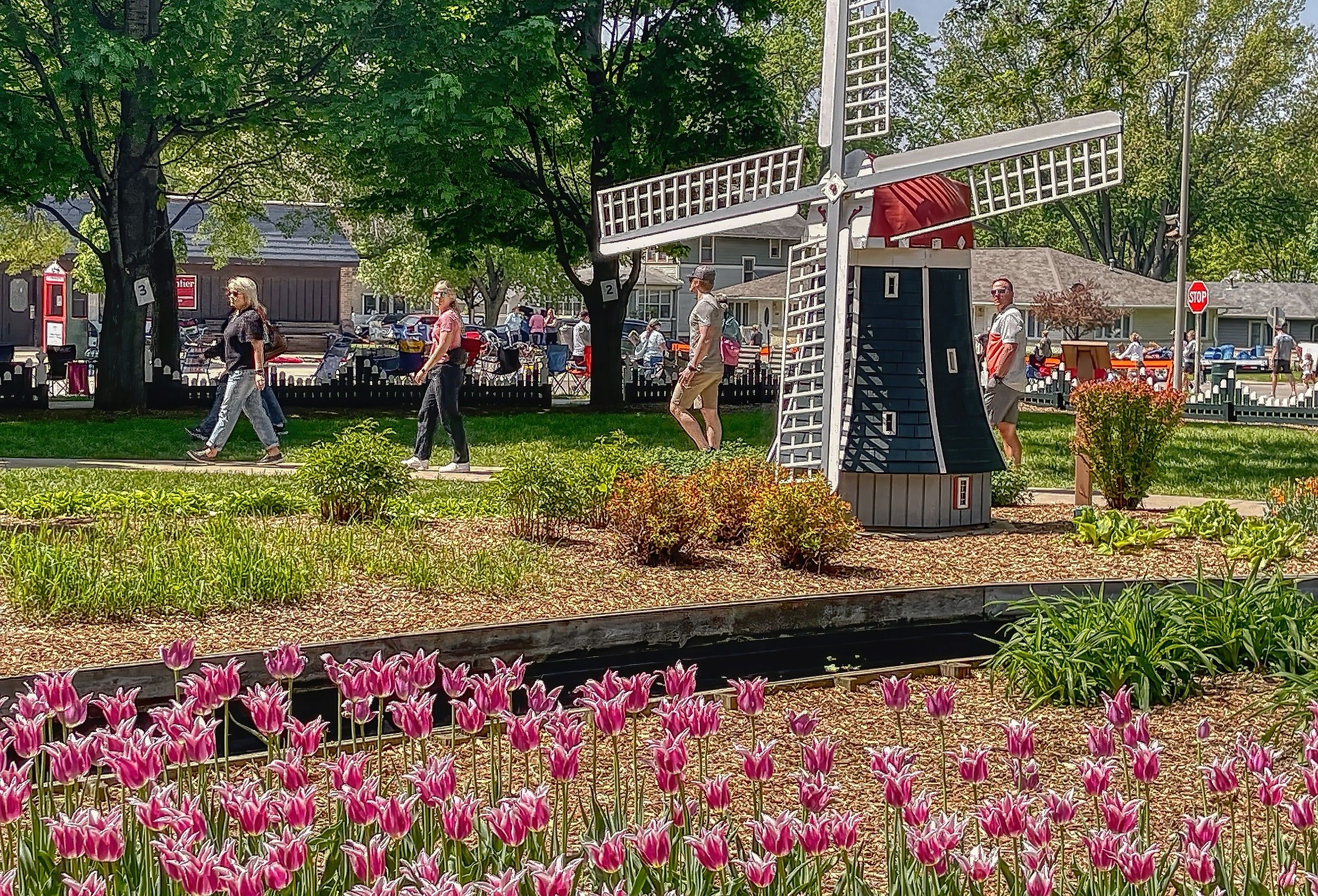
10 Timeless Towns In Iowa
The history of the state of Iowa stretches back to the last Ice Age, from the early effigy mound builders to the most significant conflicts and transformative events in American history. Many of the timeless towns in Iowa have preserved those key moments that shaped the state’s economic and natural landscapes. From the fertile banks of the Mississippi River, you will be captivated by Burlington’s winding Snake Alley, Muscatine’s historic connections with figures such as Mark Twain, and the German festivals celebrated in the Amana Colonies. Rethink your presumptions of the past and learn new mysteries and facts that may as well shape the present. These timeless small towns encapsulate and preserve the wellspring of history and culture persistent throughout Iowa.
Burlington
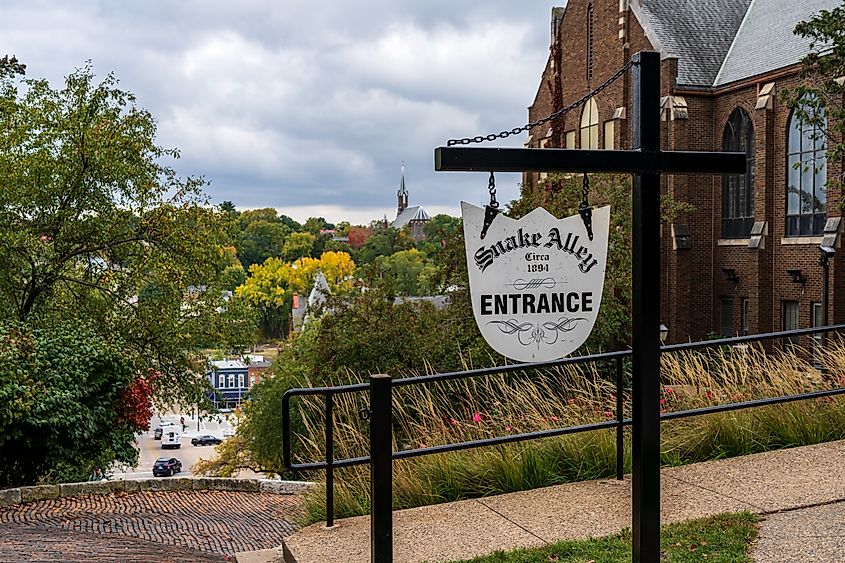
Burlington, about 75 miles from Davenport on the Mississippi River and beside the border of Illinois, contributed much to the history of Iowa. Before its official founding in the year 1838, Burlington was originally a Mesquakie village called Shoquoquok, where Native Americans harvested flint to create tools and weapons. During the Black Hawk War in 1833, Shoquoquok was renamed Flint Hills and eventually into Burlington after a settler who once lived in Burlington, Vermont, moved permanently to Iowa. From 1837 to 1838, Burlington prospered as the territorial capital of Wisconsin until 1838 to 40, when it became the territorial capital of Iowa.
Although Des Moines is now the state capital of Iowa, Burlington is nevertheless a culturally and historically relevant community with 19th-century buildings you can tour at the Heritage Hill National Historic District. On the street known as Snake Alley, you will be astounded by the unique setup of the road, as it is reminiscent of the vineyard paths in France and Germany. Snake Alley was once a scenic route that horse-drawn carriages used to gradually climb Burlington’s steep hill from the riverbank. It was also shown in Ripley's Believe It or Not as being "Unbelievably Crooked" and the Number One Odd Spot in Ripley's Guide to the Curious Corners of America. These days, Snake Alley is renowned for hosting the Snake Alley Criterium, a bike race held each Memorial Day weekend. Whether for the culture or the fun, Burlington truly embodies a timeless town in Iowa with its preservation of the past and memories of long ago.
Muscatine
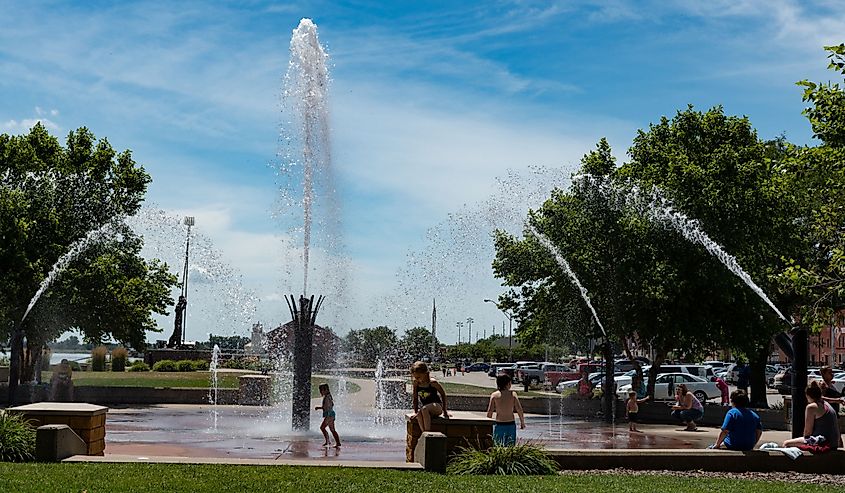
Muscatine, deriving its name from Mascoutins Native Americans or from a Native American word that means “island of fire,” once served as a humble home and retreat for some of Iowa’s and America’s most influential figures. Among these American icons who considered Muscatine an amicable abode were Mark Twain, US Civil Rights Ambassador Alexander Clark, and Alfred Wilson Lee, founder of Lee Enterprises, which is now the fourth-largest newspaper group in America.
From the late 1800s to the early 1900s, Muscatine prospered as the Pearl Button Capital of the World due to the discoveries made by John F. Boepple, a skilled button cutter. While he was walking about in the Mississippi River, he found mussel shells that were perfect for making pearl buttons. In 1904, Muscatine contributed to almost 40% of the world’s output of buttons.
For those eager for a more immersive experience of Muscatine’s quaint past, you can certainly tour several historic houses, such as the Pliny and Adelia Fay House, the Alexander Clark House, and the S.M. McKibben House. Only about an hour north of Burlington on the Mississippi River, Muscatine gives one and all a timeless sense of homeliness and amicability in Iowa.
Keokuk
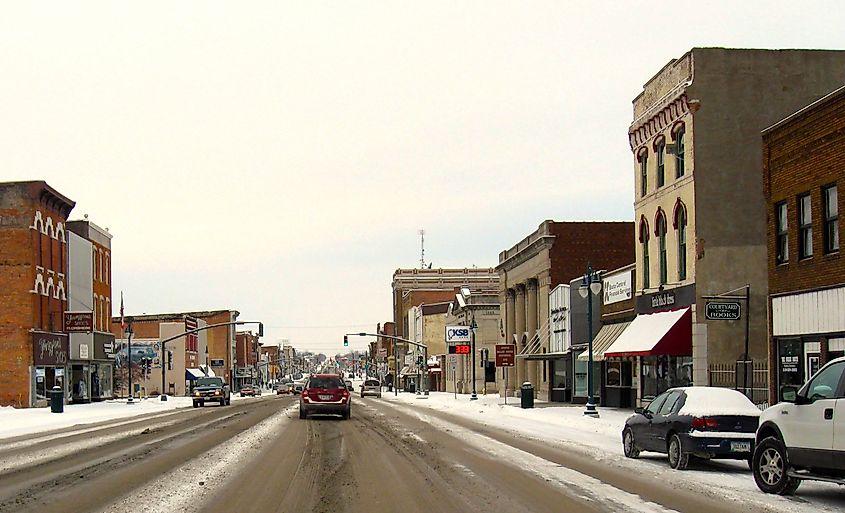
Approximately 40 miles south of Burlington, the cool town of Keokuk first started out as a quaint and simplistic trading post in 1820. It was named after Sauk Native American chieftain Keokuk, whose body is interred in the town’s park which you can pay homage to. Because of its idyllic position at the point where the Des Moines River and the Mississippi River converge, Keokuk was a perfect place for a man named Samuel C. Muir to conduct his trading business with other nearby settlements.
By 1837, during the American Civil War, Keokuk accommodated dozens of wounded soldiers fleeing on boats through the Mississippi River, although over 4,000 American soldiers were buried in the Keokuk National Cemetery due to their injuries. Around this time, Lake Keokuk was soon created when the Des Moines River became dammed. After you are finished admiring the artificial lake of Lake Keokuk, you can either tour the Keokuk public library for some of Mark Twain's memorabilia or enter the home of Samuel F. Miller, the late justice of the US Supreme Court appointed by President Abraham Lincoln.
McGregor
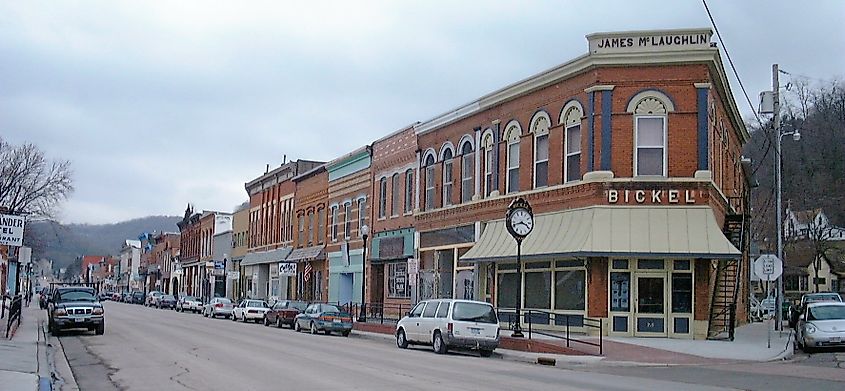
On the Mississippi River that separates the states of Iowa and Wisconsin, you will be mesmerized by the eccentric and transcendental town of McGregor. As one of the smallest timeless towns worth visiting, McGregor’s history is one of perseverance and hope in times of conflict. Long ago, the descendants of the great Rob Roy MacGregor immigrated from Scotland to America to find a new home in the New World. However, they found difficulties in Iowa since the Sioux, Sauk, Fox, and Winnebago tribes were in conflict during the Black Hawk War.
Fortunately, the Black Hawk War eventually ended and allowed the MacGregor family to form a ferry business on the Mississippi River. Over the years, the town of McGregor has allowed nearby communities like those in Prairie du Chien and in the Driftless Area to prosper vis-à-vis trade and commerce. Besides the interesting history, you can learn about in McGregor, you might also be interested in exploring a number of panoramic destinations around McGregor, such as the Effigy Mounds National Monument, Pike’s Peak State Park, and the Yellow River State Forest - Paint Creek Unit and Bloody Run Wildlife Management Area.
Bellevue
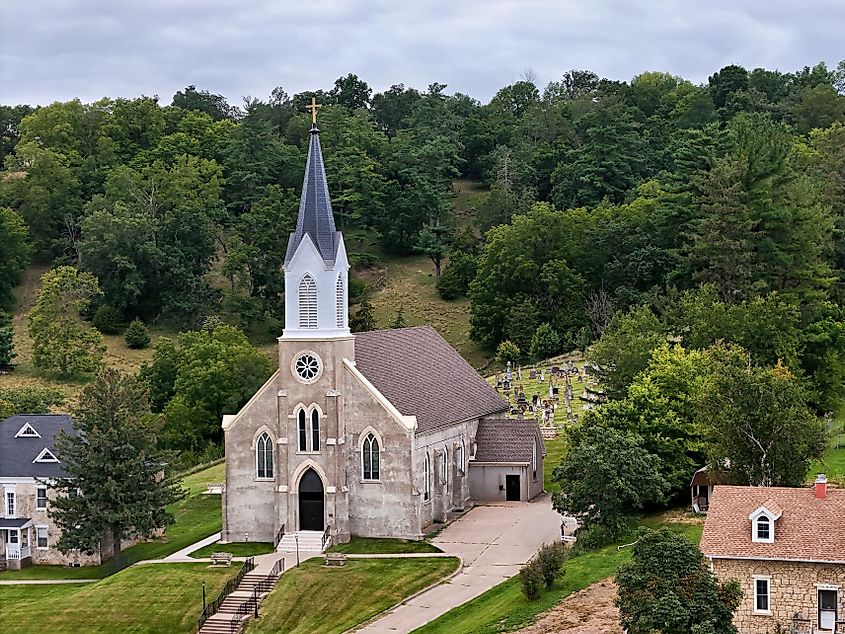
Bellevue, French for "beautiful view," is certainly one of the best spots in Iowa that promotes some of the best views in the state from atop the many large hills and bluffs around the town. Bellevue was not always a scenic destination on the Mississippi River. In its inception in 1835, the town’s founder and first postmaster, John D. Bell, built his first cabin there to begin his career as the first postmaster of Bellevue. Over the years, enterprises like Peter Dutell’s Bellevue House, Bellevue’s first hotel, prospered since its construction in 1836. In 1840, however, Bellevue waged the Bellevue War, in which the town competed with other towns like Andrew for the county seat.
Bellevue’s county courthouse, first functional in 1845, houses a number of historic artifacts that you can peruse. Additionally, this same courthouse served as the oldest active school building in Iowa. The landscape outside Bellevue is also a location that one should not miss out on, as many who visit Bellevue can attest to the beauty of both the Bellevue State Park and Little Mill Wildlife Management Area. More importantly, those who cross the Mississippi River towards the state of Illinois will find the Lost Mound National Wildlife Refuge an excellent place filled with nature and history.
Decorah
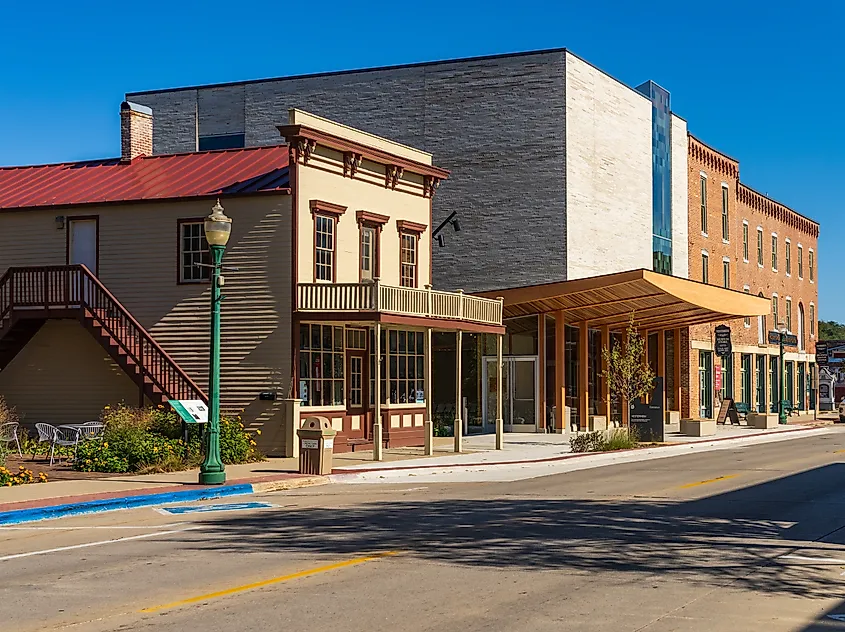
Decorah shelters a spectrum of spectacular historical tidbits that date back as far as the prehistory of the last Ice Age. The most famous feature in town is the Decorah Impact Crater, a 3.5-mile-long crater that is 465 million years old and created when a meteor crashed on this specific spot in Iowa. When paleontologists were investigating this interstellar crash site, they uncovered Decora’s giant sea scorpions, Pentecopterus decorahensis, a top predator in the Ordovician period.
Thousands of years later, when the glaciers of the last Ice Age formed what is now the Driftless Area, a number of magnificent and dynamic areas have become available and accessible from Decorah. Among these exquisite spots for tourists to see are the Ice Cave, Malanaphy Springs, and Dunning’s Spring. In more recent history, you can admire memorabilia from the Scandinavian country of Norway at the Norwegian-American Museum.
The Amana Colonies
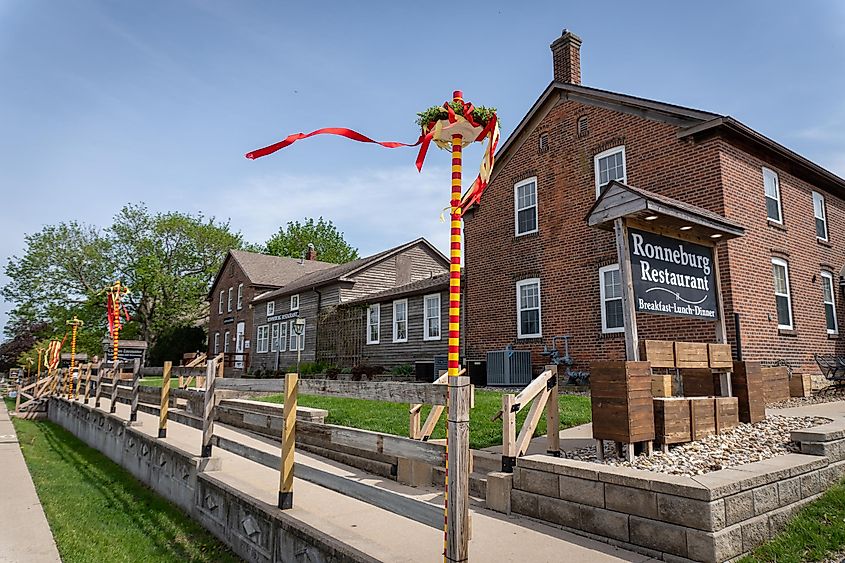
The Amana Colonies is a community of interconnected villages with deep cultural and historic ties to Germany. Back in the 18th century, followers of a religious movement called Pietism were being persecuted in Europe. Many of these Pietist Germans fled across the Atlantic Ocean in 1855 and founded a series of villages in Iowa, which they originally called “Bleibtreu” or “remain faithful.” Over the years, these six interconnected villages—Amana, East Amana, High Amana, Middle Amana, South Amana, West Amana, and Homestead—were eventually named after the word “Amana” in the Song of Solomon 4:8 of the Bible, which means “remain true.”
One can see how the townsfolk remain true and faithful in historic edifices like the Homestead Church. The Amana Colonies also remain deeply rooted in their German heritage with the yearly Tannenbaum Forest that starts in November and ends in December, the Wurst Festival in June, and the town’s version of Oktoberfest. There are many more places of interest in the Amana Colonies, such as the Mini-Americana Barn Museum, which has woodwork carvings by Henry Moore. Only about 30 minutes from the big cities of Iowa City and Cedar Rapids, the Amana Colonies continue to remain true and faithful to their Pietist inclinations.
Elkader
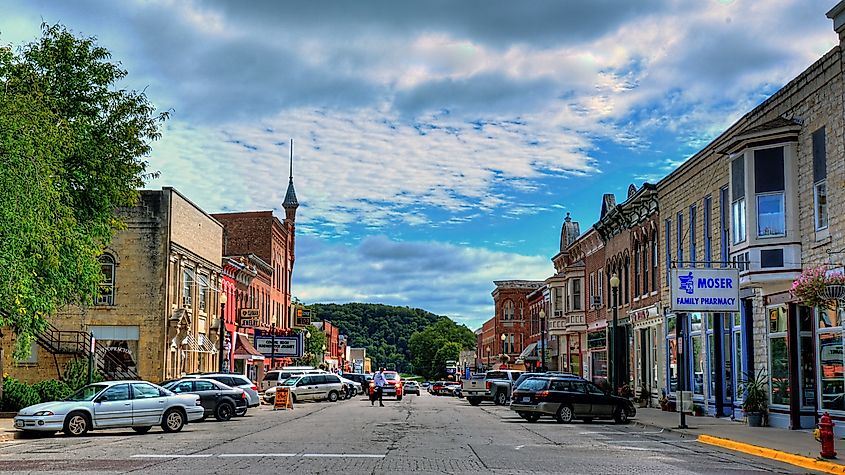
Elkader, approximately 20 miles from McGregor, is a lackadaisical little town on the Turkey River. When the town’s founders, Timothy Davis, John Thompson, and Chester Sage, were deciding on how to name their community in 1846, they decided to base the town’s name after the Muslim Algerian leader, the Emir Abdelkader, who led a resistance movement against France’s conquest on Algeria. Interestingly enough, Elkader is a Sister City of Mascara, Algeria, and there are over eleven sites on the National Register of Historic Places in Elkader, such as the Carter House Museum, that focus more on Elkader’s distant connections with Algerian culture, customs, and traditions.
The Earthmoving Legacy Center, on the other hand, highlights the history of how dirt has been moved over the ages—quite literally, it showcases a number of machines, vehicles, and equipment that have contributed to the relocation of soil. Meanwhile, the Motor Mill Historic Site houses a quaint little edifice from a bygone time next to the more modern music performances found in the nearby Cabin Concerts.
Orange City
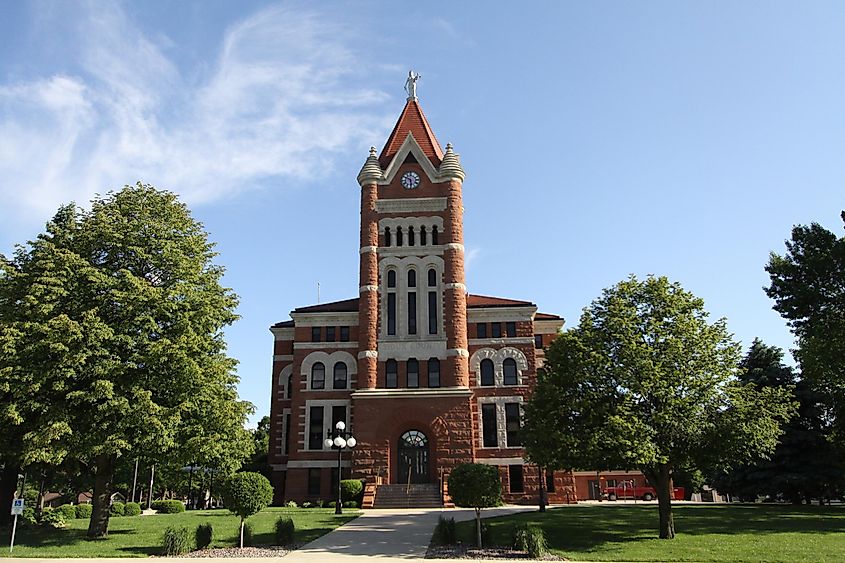
In the year 1869, a group of Dutchmen from the town of Pella sought a new place to put down roots in Iowa. They then came upon a fertile field in Sioux County and named the locality “Holland” after their original homeland in Europe. Eventually, this locality grew into a town named Orange City, which was named after William of Orange, who was a member of the Royal House of Orange in the Netherlands.
Today, the people of Orange City maintain their Dutch affiliations and traditions with the annual Tulip Festival that has been around since 1936. Travelers will be fascinated by the Vogel Windmill, a replica of a mill from Holland furnished with antiques imported from the Netherlands. At the Stadscentrum, one can listen to Orange City’s Dutch street music while admiring a number of wooden shoe carvings. Only about 49 minutes from Sioux City, newcomers to Orange City will find the town a cheerful and colorful destination filled with the timeless joys of Dutch traditions.
Elk Horn
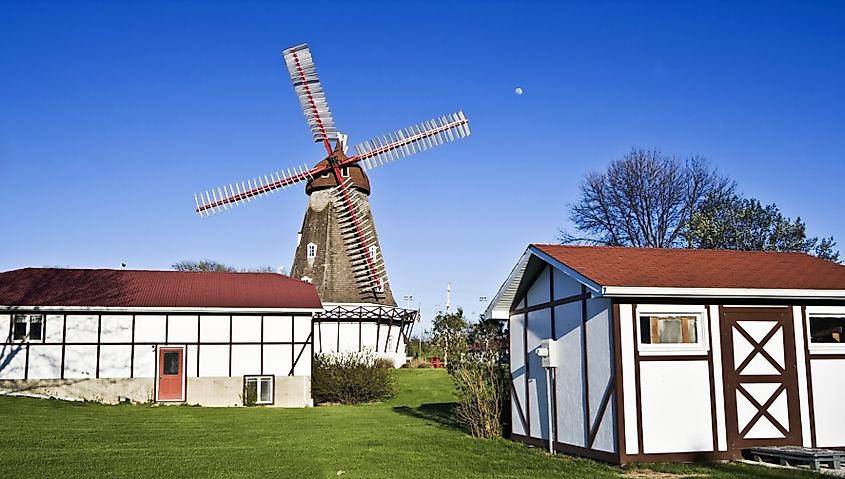
Elk Horn is renowned as Iowa’s enclave for Danish ethnicity and culture. Only about 80 miles from the city of Des Moines, visitors to Elk Horn will be immersing themselves in the delightful Danish town reminiscent of Denmark. One can easily tell Elk Horn’s cultural and historic inclinations to Denmark due to the 60-foot-tall Danish windmill beside Elk Horn Creek. Additionally, visitors can go exploring through the Ebeltoft Village, a replica of a village in Denmark known as Ebeltoft, which promises a number of cuisines and delicacies from Europe.
The Museum of Danish America not only chronicles the history of Elk Horn but also features memorabilia and exhibits that speak of the general migrations of many Danish folks from the Old World to the New World. One of the best things about Elk Horn is its Viking Hjem, a replica structure that the Danish Vikings would have used, which lived around the year 900 CE. There is also the Tivoli Fest from May 26 - 27 and the Julefest from November 24 - 25 that further exemplify Elk Horn’s Danish heritage.
History is the story of a culture and a people, a place and its residents, often with many difficult and complex themes. For example, Iowa's history involves the displacement of many Algonquin-speaking Native Americans, who signed government treaties in the late 1800s to resolve conflicts such as the Black Hawk War. The many timeless towns in Iowa, though beautiful and serene, were established on land once inhabited by the Winnebago, Fox, Sioux, and other Indigenous peoples. Fortunately, in recent years, efforts have been made to acknowledge and address these past injustices and show respect to the Native American cultures that were prevalent in Iowa, even as visitors appreciate the Danish, German, Dutch, and Scottish heritages.











